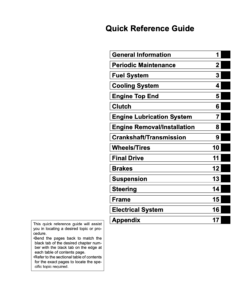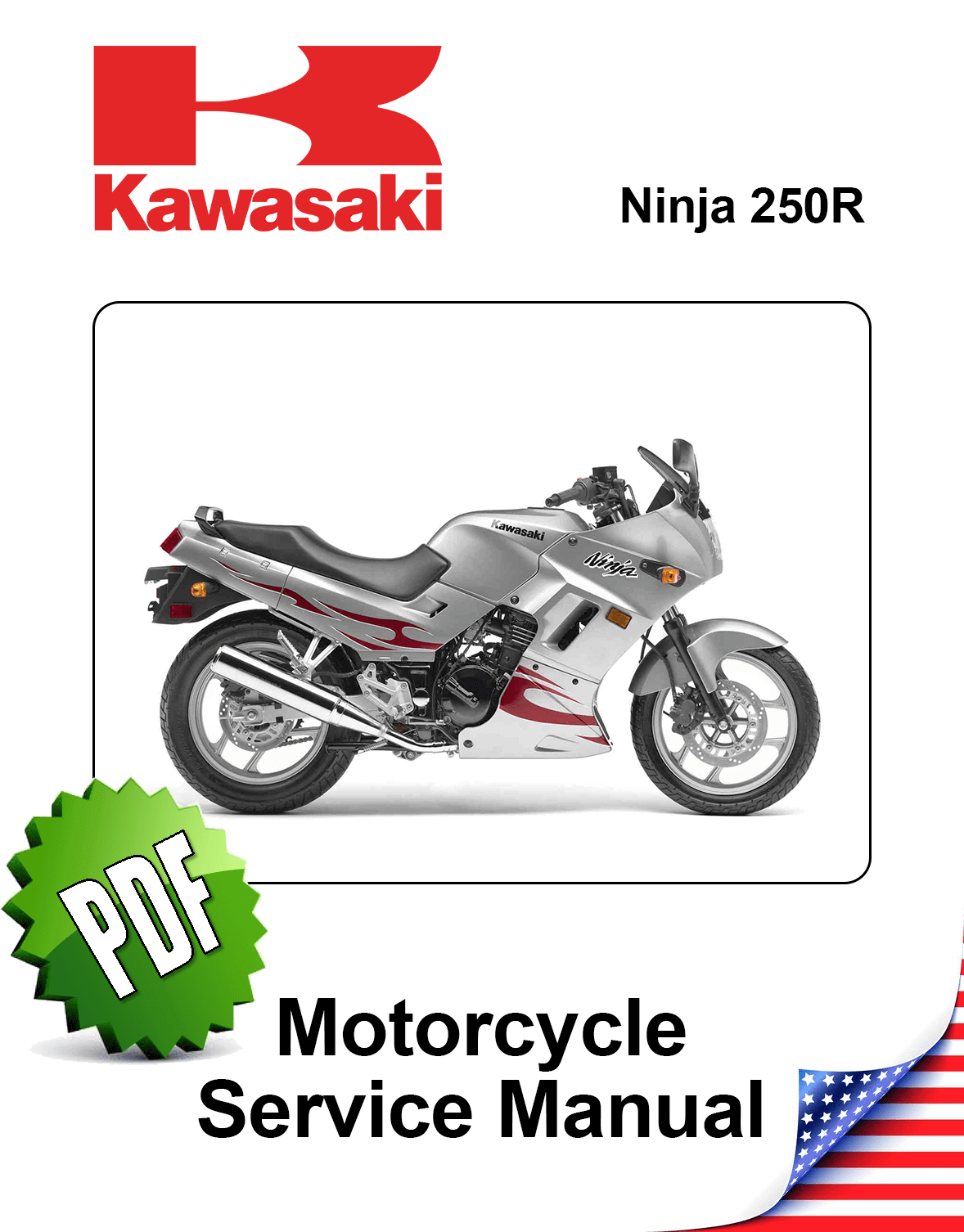Complete PDF version of the Service Manual for the Kawasaki Ninja 250R. A MUST for every Ninja 250R owner.
Download: Immediately after payment!
OEM Original factory workshop manual.
Models covered by this manual: 2008 to 2012
Number of pages: 428 pages
Table of contents:

This PDF repair manual can be downloaded right after the payment process in complete, on the device of your choice.
We do not offer printed manuals, for the following reasons:
- it is more eco-friendly to use a digital version
- your manual never gets dirty or greasy
- you can always choose to print the specific page(s) you need to work on your bike
- you receive your manual immediately after payment
- it is searchable
Kawasaki Ninja 250R
The Kawasaki Ninja 250R (codenamed EX250; prior iterations had market-specific designations) is a motorbike of Kawasaki‘s Ninja sport bike series, first released in 1986. As the marque’s entry-level sport bike, the motorbike has seen minimal alterations throughout its quarter-century lifespan, with just three major redesigns. The Ninja 300 has replaced the Ninja 250R in various areas.
Since 2008, the bike has been marketed in all markets as the Ninja 250R. It is also known by its platform identifier, EX250, which is followed by a generational suffix. Previous variants (EX250-E/F/G/H) were previously marketed as part of the Ninja series of sport motorcycles in the United States, while the bike was known as the ZZR-250, ZX-250, or GPX-250R outside of the United States. The GPZ-250 was given to one of the first versions, the EX250-C.
The Ninja 250R’s ergonomics, chassis design, and engine placement have resulted in a motorbike that falls between between the standard and sport categories. The Ninja’s riding position is also in between conventional and sport.
Kawasaki redesigned the EX250 for the first time in twenty years in 2008. In every area, the EX250-J model is marketed as the Ninja 250R.
The -J retains parts from the third generation, but its new external panels bring the Ninja’s look out of the 1990s and into line with late-2000s sportbikes. According to Kawasaki, the engine and drivetrain retain 30% of the -F model’s components. To improve middle performance, the engine’s compression and maximum torque have been reduced. The engine change improved engine response at low engine speeds, making the bike smoother and “far nicer to ride.”
Though the previous generation Ninja 250R had a 1 to 5 hp (0.75 to 3.73 kW) edge in peak power, the new version’s 20 to 30% improvement in mid-range power allows the bike to pull from 3,000 rpm when it previously had to be cranked to 4,000 rpm. The -J model in the United States, like the -F model, has two carburetors, however the European, Brazilian, and Thai variants feature fuel injection. The wheels were enlarged to 17 inches, the front suspension was upgraded, and the braking rotors were replaced with bigger petal-shaped rotors. A fuel gauge was installed in place of the temperature gauge in the carbureted version. The EX250-J’s wet weight increased by 10 kg (22 lb) over its predecessors due to the extra and modified equipment.
With the introduction of the EX250-J, production remains in Thailand.
Source: Wikipedia


